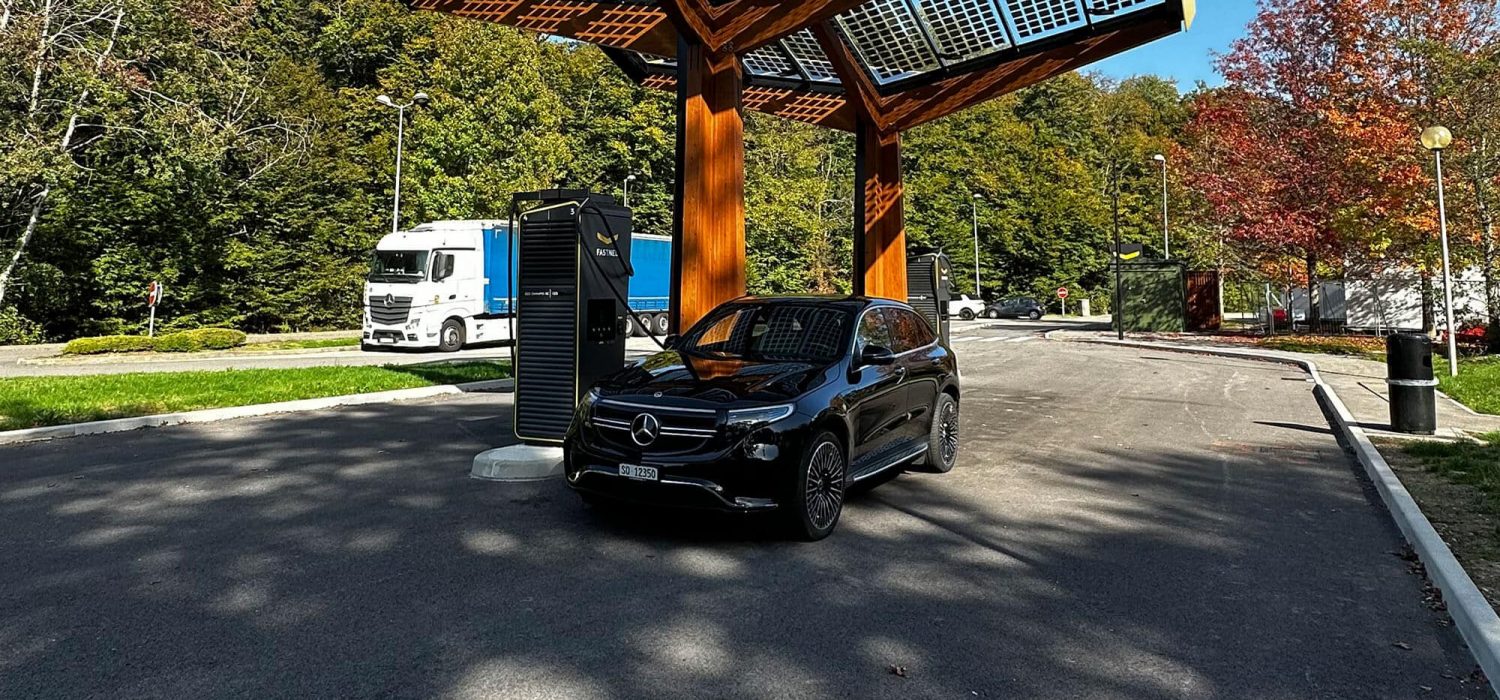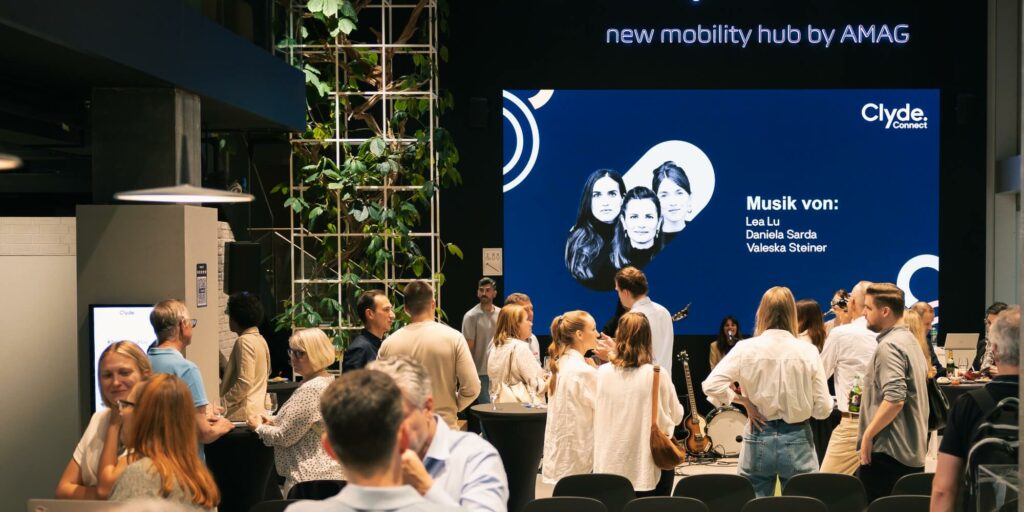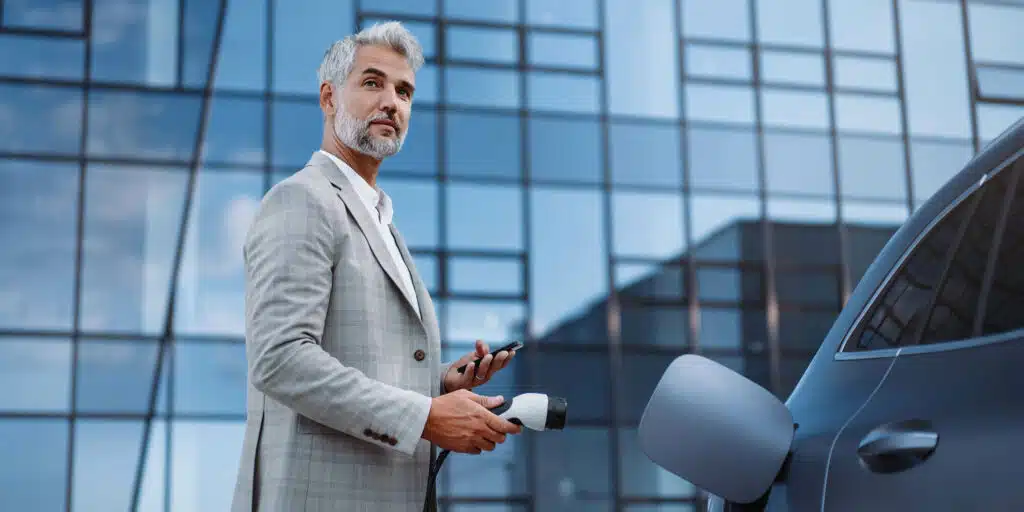
A post by guest author Renato Mitra, Head of Marketing & Communications at Helion.
Taking the electric car on a family vacation to France – impossible?
France – a developing country in terms of charging infrastructure after all?
On French motorways with an electric car: easy, but not cheap
Taking the electric car to Disneyland Paris
The centre of Paris: charging points as far as the eye can see
Smooth journey, also on the return trip
My conclusion: taking an electric car on a family holiday is no problem at all
Travelling by plane within a radius of 1000 kilometres makes little sense. So that option is already out. When travelling by train to Germany and Paris, we had unfortunately had bad experiences regarding seat reservations and had usually ended up in the aisle on the floor. Then there’s the luggage for a week and all possible weather conditions, plus multiple transfers. So in the end we also decided against a train journey. Which left one option:
we’d be setting off on the approximately 600-kilometre journey in our electric car, a Mercedes EQC.
Family holiday in an electric car: impossible?
According to what you hear from friends or in the comments sections, a family holiday by electric car is supposed to be impossible. Too little range, queues for charging stations, defective charging stations, and you are probably going to be on the road longer than your holiday is supposed to last. But we are not deterred by such preconceptions. On the contrary, we accepted the challenge and wanted to find out for ourselves.
Go prepared.
When preparing for the trip, I consulted various apps about the route to find the best places to take breaks. The journey there and back looked straightforward, with many fast charging points along the motorway from different providers with all kinds of charging capacities and connections. Depending on the app provider, you can also change the filter settings to include toilets, shops or restaurants. So as long as we stay on the motorway, charging in France is no problem.
France – a developing country in terms of charging infrastructure after all?

In the Parisian suburbs, things looked quite different. The charging stations were listed rather sparsely in the apps I used. It almost looked like France was a developing country in terms of charging infrastructure.
However, I was then advised to use the Chargemap app on my smartphone for France. This also gives you the option of ordering a Chargemap charging card. This does not make electricity cheaper, but it can save on individual registrations.
And sure enough, there were considerably more charging stations listed here. Another advantage of Chargemap is that a community of users is constantly updating the information on the status of charging stations. Photos of locations, newly added charging stations or updates to existing entries can be submitted here by all registered users.
On French motorways with an electric car: easy, but not cheap
We were on our way. Two stops at fast charging points with at least 100 kW charging capacity were planned before the Paris suburbs. I did look into certain places to stop, but then let the Mercedes EQC calculate for itself where and how long we needed charging stops on our route. The Mercedes took into account all live data such as charging station availability, any energy consumption on the route and traffic information, and these are constantly checked to update the route.
The first charging stops

The first stop was planned at a Fastned Charger for 20 minutes, the second at an Ionity right next to the motorway junction. As is so often the case with Ionity, one of the eight charging points was defective or unresponsive. So without further ado we moved the car and off we went. Charging stations at motorway service stations are great because you have all the infrastructure such as toilets, food outlets etc. at your disposal. In addition, there are hardly any cars here, as in France a fairly expensive toll has to be paid to use the motorway. You hardly ever see locals here, and you share the motorway with just a few other foreign drivers.
Taking the electric car to Disneyland Paris
The next day we went to one of the Disney hotels in Paris. At least two of the hotels have 16 to 18 charging stations each in their car park. Here you can charge comfortably with approx. 4 kW charging capacity, but we were there for two nights anyway. Moreover, the charging process was free of charge, and required no registration or login. Just plug in, and done.
The centre of Paris: charging points as far as the eye can see
After three days of roller coasters and Mickey Mouse, we went into the centre of Paris to see some art, culture and architecture. Here, too, it has to be said that there were always several charging points at almost all the parking facilities, a good number of which were also vacant and available. Charging was possible with Mercedes Me or the Chargemap card.
Smooth journey, also on the return trip
Since we hardly charged at all during the inner-city journeys, we then had to plan for three charging stops on the journey home instead of two. However, none lasted longer than 15 to 18 minutes because we only ever selected charging stations with more than 100 kW charging capacity. But the breaks usually lasted longer, because people wanted to stretch their legs, talked to other electric car drivers, the whole family needed a loo break or wanted to eat something. We arrived back home completely relaxed.
My conclusion: taking an electric car on a family holiday is no problem at all
Unfortunately, there are still many preconceptions, a lot of partial knowledge and false reports around electromobility. This was also shown in a recent study conducted by the Swiss Auto Trade Association (AGVS) and the ZHAW. This confirmed the opinion that a car must be able to cover 1000 kilometres without refuelling or recharging. The important rest breaks are forgotten in the process. When driving with children, you have to take these breaks anyway, not only because of their need to move around, but also because of toilet breaks. In my opinion, it is not necessarily the size of the battery that matters for a family holiday, but how fast an electric car can charge. As you can see from our example, a charging stop never took more than 15 to 20 minutes at the most.
I look forward to many more holidays and trips with an electric car.
About Renato Mitra
Renato has been on the road professionally as Head of Marketing at Helion since 2018, and privately with the all-electric Mercedes EQC and the Audi Q8 e-tron Sportback. Renato describes himself as an energy maker. On the Clyde E-Mobility Blog he reports about his experiences with electric mobility.
Your electric car includes the electricity
Thanks to our unique Clyde Energy Benefit, electricity is included both at public charging stations and at home or at work. If you charge your electric car at one of the many public charging stations in our partner charging network in Switzerland and throughout Europe, electricity is included in your monthly subscription. Private charging is credited in the form of vouchers that you can put towards your next monthly payment.



